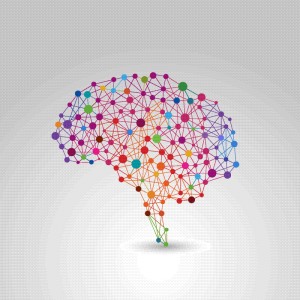Creativity: Happenstance or Habit?
 Is it a skill or an innate trait? Can one train to be creative? Is the creative process more successful if it is chaotic and random or if it has a rigorous systematic approach? Neither? Both?
Is it a skill or an innate trait? Can one train to be creative? Is the creative process more successful if it is chaotic and random or if it has a rigorous systematic approach? Neither? Both?
As a dancer, choreographer, educator, embodied anatomist, and somatics practitioner, and author, I have had a long personal investigation with creativity. I have choreographed over 50 dances, created movement strategies for ease in action, written a book, and designed countless college courses. In teaching a course in creative action at Towson University and reading the research and writing on creativity, the questions above came to mind.
There are some interesting articles and books out there on this topic and here are some thoughts from some of the experts. The following excerpt is from Carolyn Gregoire’s article in the Huffington Post. She suggests creativity is complex.
“In fact, creativity is thought to involve a number of cognitive processes, neural pathways and emotions, and we still don’t have the full picture of how the imaginative mind works. And psychologically speaking, creative personality types are difficult to pin down, largely because they’re complex, paradoxical and tend to avoid habit or routine. And it’s not just a stereotype of the “tortured artist” — artists really may be more complicated people. Research has suggested that creativity involves the coming together of a multitude of traits, behaviors and social influences in a single person.”
Not all creative people tend to avoid habit and routine, in fact, just the opposite. The science fiction writer Robert Heinlein was a proponent of a daily routine of writing.
The internationally recognized choreographer, dancer, and director and author of The Creative Habit, Twyla Tharp, describes the creative process as starting with a discipline and rigor of attention in a systematic pattern that develops into habit. In her book The Creative Habit, she writes the following about creativity:
“… I come down on the side of hard work. That’s why this book is called The Creative Habit. Creativity is a habit, and the best creativity is a result of good work habits. That’s it in a nutshell.”
(Tharp, Twyla (2009-03-21). The Creative Habit: Learn It and Use It for Life (p. 6). Simon & Schuster. Kindle Edition.)
Tharp continues,
“In order to be creative you have to know how to prepare to be creative. No one can give you your subject matter, your creative content; if they could, it would be their creation and not yours. But there’s a process that generates creativity— and you can learn it. And you can make it habitual. There’s a paradox in the notion that creativity should be a habit. We think of creativity as a way of keeping everything fresh and new, while habit implies routine and repetition. That paradox intrigues me because it occupies the place where creativity and skill rub up against each other.”
(Tharp, Twyla (2009-03-21). The Creative Habit: Learn It and Use It for Life (p. 8). Simon & Schuster. Kindle Edition.)
In speaking of Gregoire’s new book, Wired to Create, New York Times reviewer Christie Ashwanden writes,
“Contrary to the well-worn notion that creativity resides in the right side of the brain, research shows that creativity is a product of the whole brain, relying especially on what the authors call the “imagination network” — circuits devoted to tasks like making personal meaning, creating mental simulations and taking perspective.”
The physicist, the software designer, and the artist all work from a common ground of creativity, sourcing many portions of the brain. They are creating something new, involved in excavation and exploration to develop new artist works, new IT designs, new theories of scientific thought. Are the scattered thinker and/or procrastinator as likely to produce excellent creative results as the systematic, organized approach to creative endeavors?
In stimulating the creative parts of the brain into action, I am aware that individual difference is key and honoring, honing and supporting people to own their creative process can generate innovative cultural, educational and artist ideas, actions, and results in which we as a society can all benefit.
To create a single creative contribution can be a serendipitous, to achieve a body of creative work requires developing a creative habit.
Feel free express your views in the comment section below.

Hi there friends, its enormous piece of writing
about educationand entirely defined, keep it up
all the time.